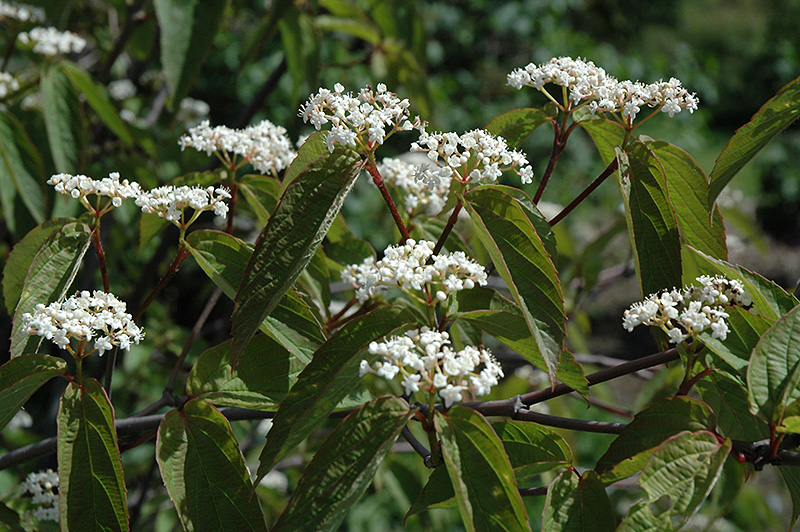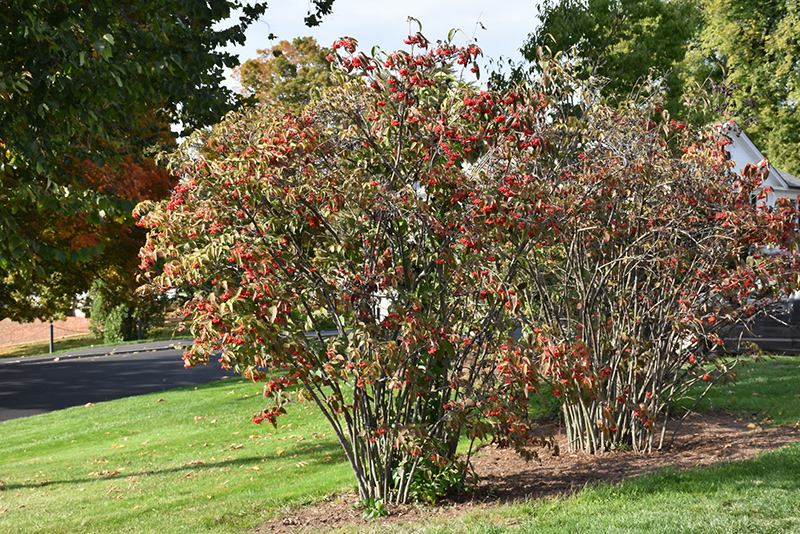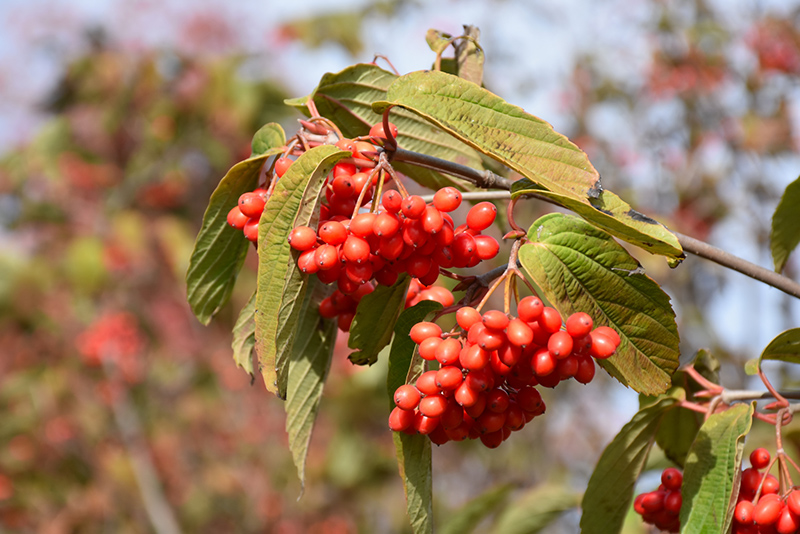>> Home
Height: 10 feet
Spread: 8 feet
Sunlight:
![]()
![]()
Hardiness Zone: 4b
Description:
A spectacular shrub when in bloom, covered in beautiful white flowers along the branches in spring, an outstanding selection; attractive horizontal branching on a compact plant with light orange-red berries later in season; fall color is sporadic
Ornamental Features
Tea Viburnum is covered in stunning white flat-top flowers held atop the branches in mid spring. The orange fruits are held in abundance in spectacular clusters in early fall. It has dark green deciduous foliage. The serrated pointy leaves turn an outstanding red in the fall.
Landscape Attributes
Tea Viburnum is a multi-stemmed deciduous shrub with an upright spreading habit of growth. Its average texture blends into the landscape, but can be balanced by one or two finer or coarser trees or shrubs for an effective composition.
This is a relatively low maintenance shrub, and should only be pruned after flowering to avoid removing any of the current season's flowers. It is a good choice for attracting birds to your yard, but is not particularly attractive to deer who tend to leave it alone in favor of tastier treats. It has no significant negative characteristics.
Tea Viburnum is recommended for the following landscape applications;
- Accent
- Mass Planting
- Hedges/Screening
- General Garden Use
Planting & Growing
Tea Viburnum will grow to be about 10 feet tall at maturity, with a spread of 8 feet. It has a low canopy with a typical clearance of 1 foot from the ground, and is suitable for planting under power lines. It grows at a medium rate, and under ideal conditions can be expected to live for 40 years or more.
This shrub does best in full sun to partial shade. It does best in average to evenly moist conditions, but will not tolerate standing water. It is not particular as to soil type or pH. It is highly tolerant of urban pollution and will even thrive in inner city environments. This species is not originally from North America.


